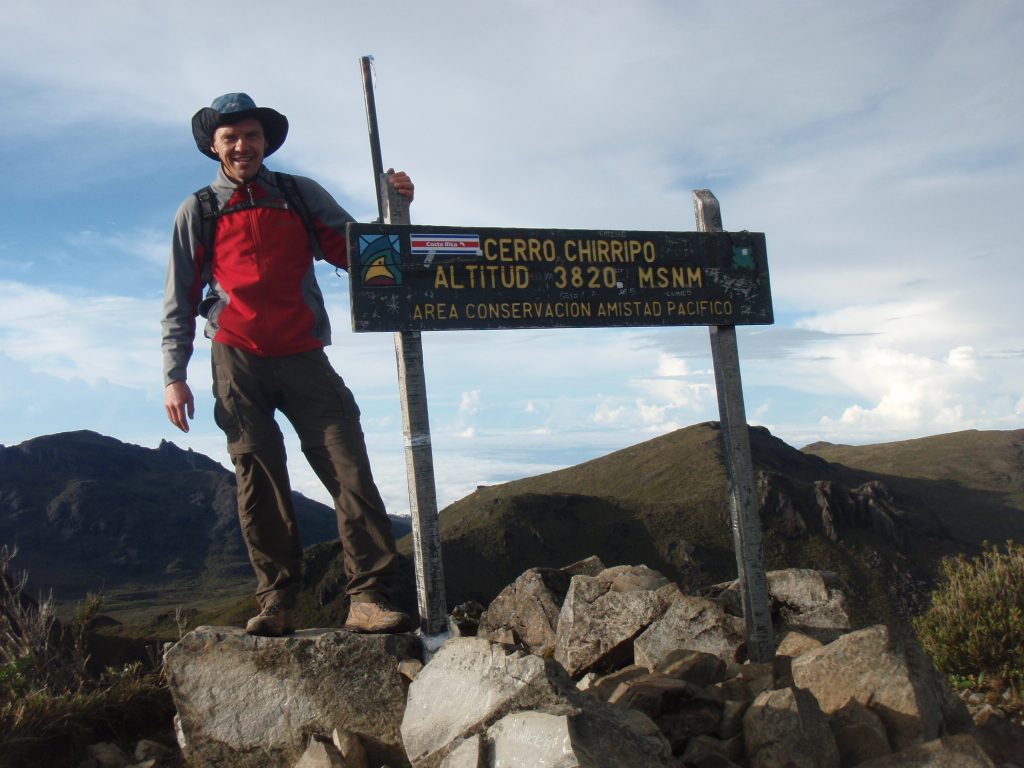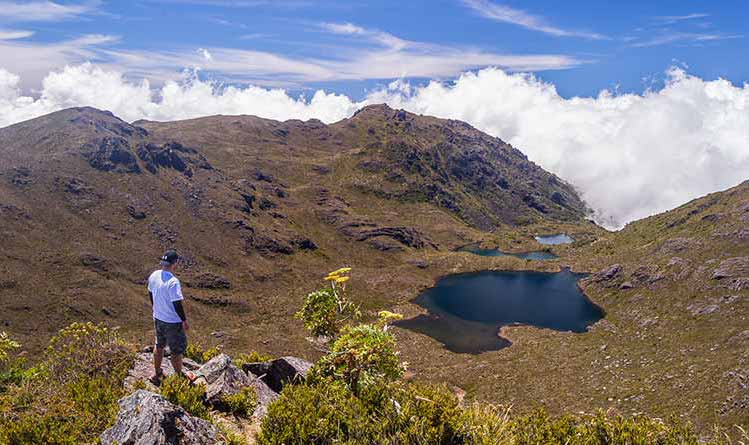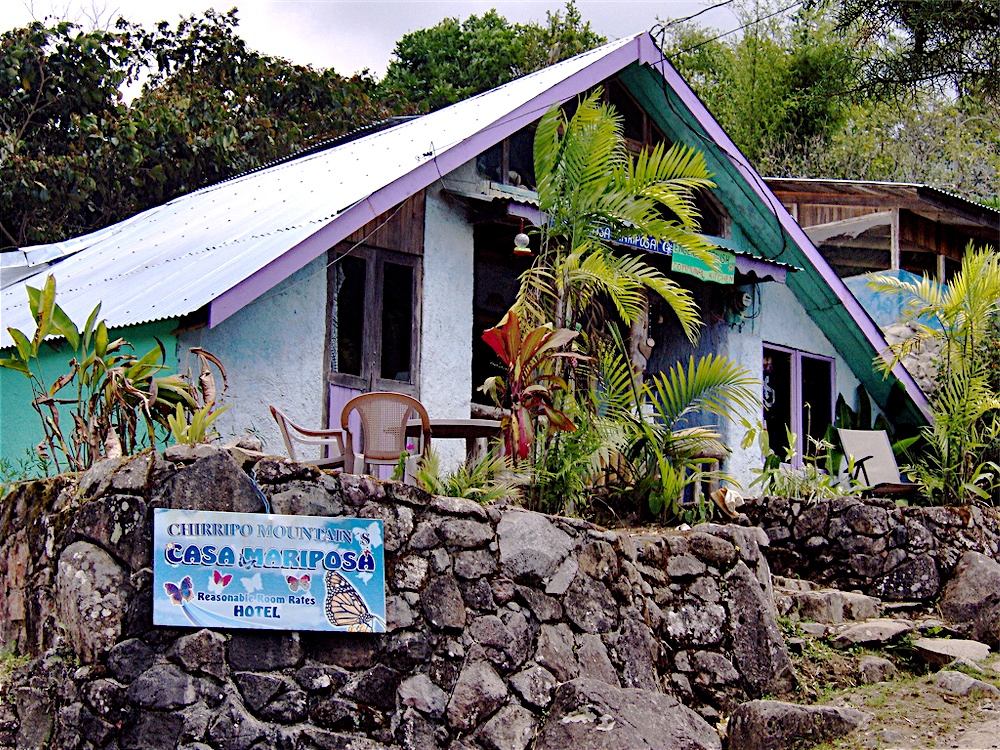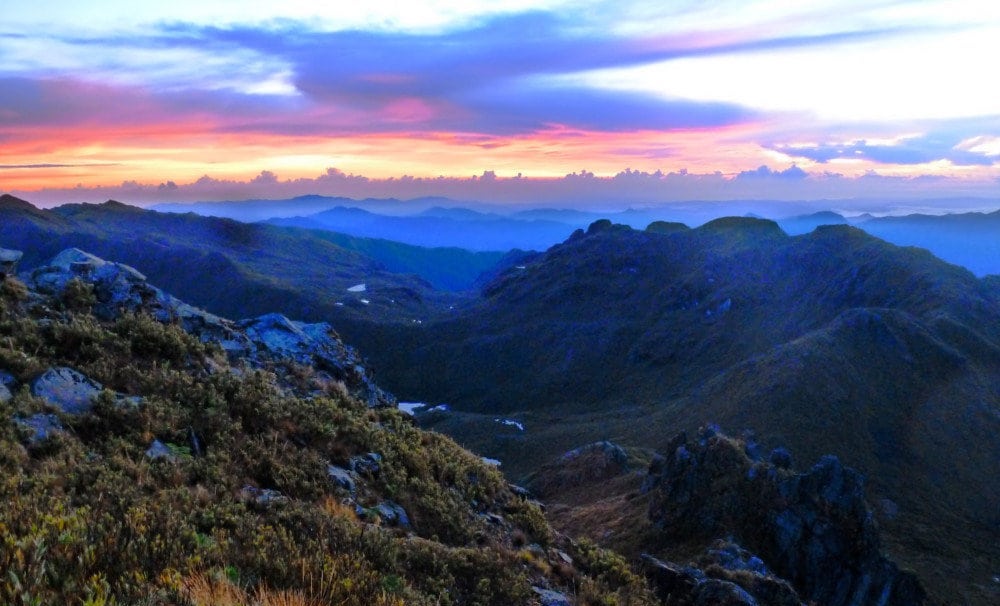
Mt. Chirripó, the highest mountain in Costa Rica (and second highest in Central America) stands tall at 3,820 m (12,532 ft.). Climbing 19 km up Chirripó is one of the best ways to experience the beauty of Costa Rica. Monkeys roam the forests; the terrain continues to change every hour; the flowers come in every color. But the most motivating reason hikers put themselves through this rigorous trek is its collection of amazing views, one of which includes a view of both the Pacific and Caribbean Oceans from the summit.
WHEN SHOULD I GO?
Dry season is the best time to climb Chirripó (especially February and March), and the mountain is closed for 2 weeks in May and all of October for maintenance.
WHAT DO I NEED IF I GO?
First, get a permit to climb it. Only 60 climbers are allowed per day, and all climbers must get permits before starting the hike. 50 of the passes can be reserved ahead of time (call 506-2742-5083), but these sell out. Luckily, there are 10 passes that are released the day before, which can only be bought in San Gerardo de Rivas’ ranger station after 6:30am. Passports or passport copies are necessary for each pass. The pass costs $15. If you are spending the night on Chirripó, you must also pay for each night you stay at Crestones Base Camp ($10/night).
What to bring:
• Headlamp
• Water (at least 2 liters)
• Sleeping Bag
• Camping Stove
• Food
• Warm Clothes
• Rain Gear
• Toilet Paper
HOW DO I GET THERE?
San Gerardo de Rivas is 1.5 hrs. by bus from San Isidro (3 hrs. by bus from San Jose). There are only 2 daily buses from San Isidro to San Gerardo de Rivas, at 5 am and 2 pm. The bus takes you by the ranger station, and then continues up through this small town.

HOW MUCH TIME WILL THE HIKE TAKE AND WHERE DO I STAY?
Most people take 2 or 3 days on Chirripó’s 19-km hike, but there are some locos climbers who summit and descend all in one day! Only plan on doing this if you have done some serious training at high altitudes. The trail ascends 2,000 m (about 6,000 ft) in those 19 km, and it is not easy. There is no camping allowed on Chirripó, so anyone spending the night must sleep at Crestones Base Lodge. Crestones is 14.5 km from the start of the trail in San Gerardo de Rivas, and 5 km from the summit.

In San Gerardo de Rivas, I stayed at Casa Mariposa Guesthouse & Hostel, a beautiful hostel with very helpful owners (and the closest hostel to the trailhead) . Most climbers spend their first day hiking up to Crestones, which takes an average of 7-10 hours. You must start the trek before 10 am, and many climbers begin between 4:30-6 am to get an early start (and avoid the heat & bugs in the early part of the hike). The trail is very well marked and maintained, and there are kilometer markers up until Crestones. There is potable water at 7.5 km, around 13 km, and at Crestones (14.5 km).
Crestones has capacity for about 70 climbers, all the rooms I saw had space for 4 (2 bunk beds). There are shared bathrooms with showers (no warm water), and a large dining area. I found Crestones to be very clean throughout the rooms, bathrooms, and dining area. Crestones only provides cooking supplies (pots, pans, plates, utensils). Climbers must bring their own food, stove, and sleeping bag (bunk beds just contain mattresses). Crestones is at 3,400 m. (11,152 ft.) elevation, and the temperature at night is generally from 30-35°F so be sure to pack a warm jacket, hat, and gloves. The temperature rises to 40-65°F during the day, but always be prepared for rain and high winds.
ANY TIPS OR SUGGESTIONS?
Reaching Chirripó’s summit is a great accomplishment, and one of the best ways to enjoy it is at sunrise. The 5-km hike from Crestones to the summit takes between 2-3 hours, so it’s best to leave around 3 am. On a clear day, you can see all across the country, but clouds frequently block the view. You can leave your heavier gear at Crestones and just take a daypack to the summit. If you are spending 3 or more days at Chirripó, then you have time to explore the other trails to different peaks (such as Cerro Ventisqueros). The trek down goes faster than the way up, but don’t underestimate the downhill, it can be especially hard on your knees and toes!

Hiking in San Gerardo de Rivas isn’t limited to Chirripó – there are also natural hot springs and hiking in the Cloudbridge Reserve. This is a great way to prepare for Chirripó and pass the time if you get to San Gerardo a day early for your pass.
Currently, Outward Bound Costa Rica does not take any of our open enrollment course students on this hike. However, if you are interested in planning your own course for your class, family, friends, or outdoor group with our Custom Course Manager (Shawn Pendergrass), that is always an option. Chirripó is an unforgettable way to see a part of Costa Rica that most people do not see. It just depends: how far do you want to go while you’re in Costa Rica?
Contact our Enrollment Manager at 1 (800) 676-2018 or by emailing [email protected].